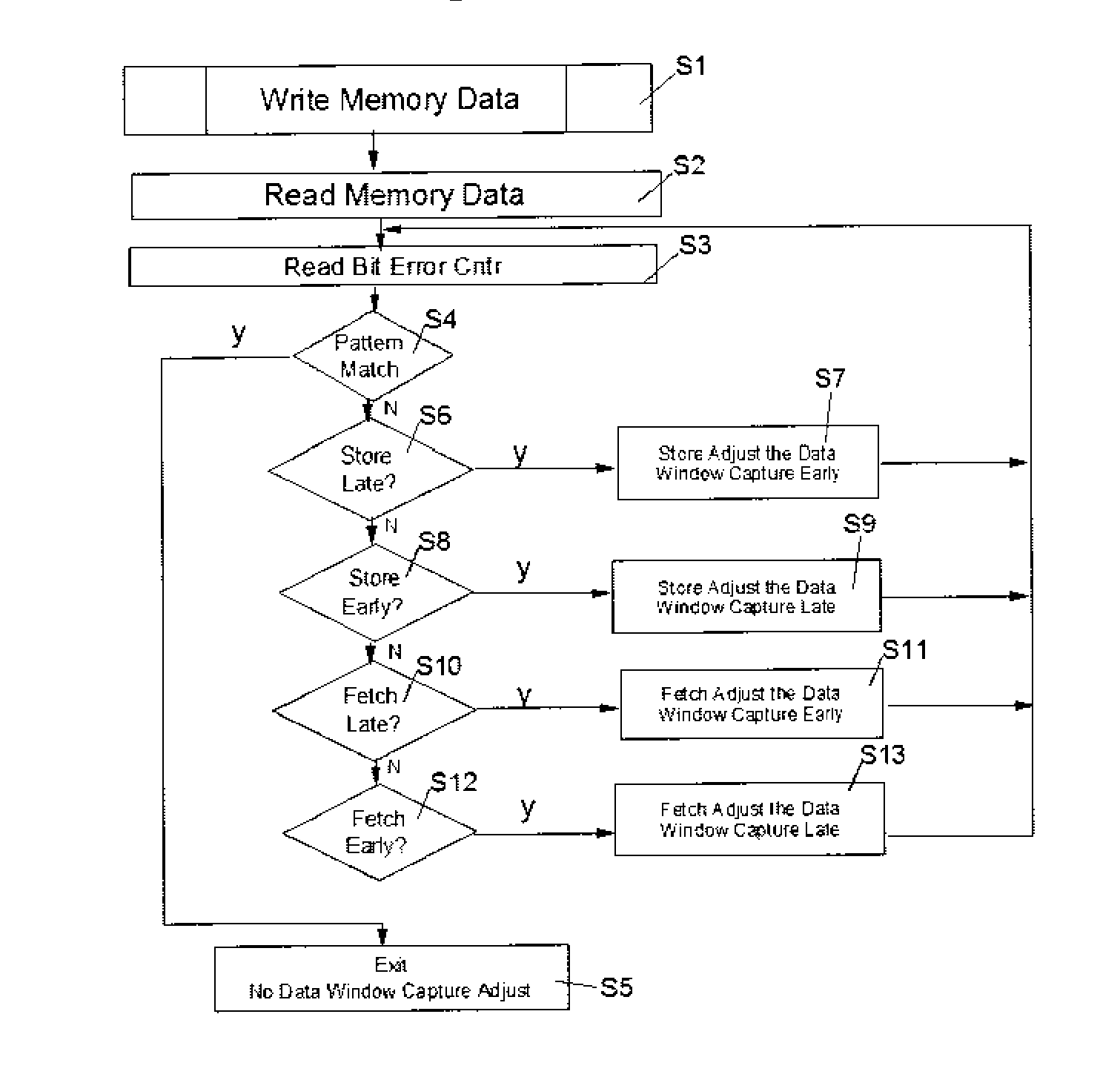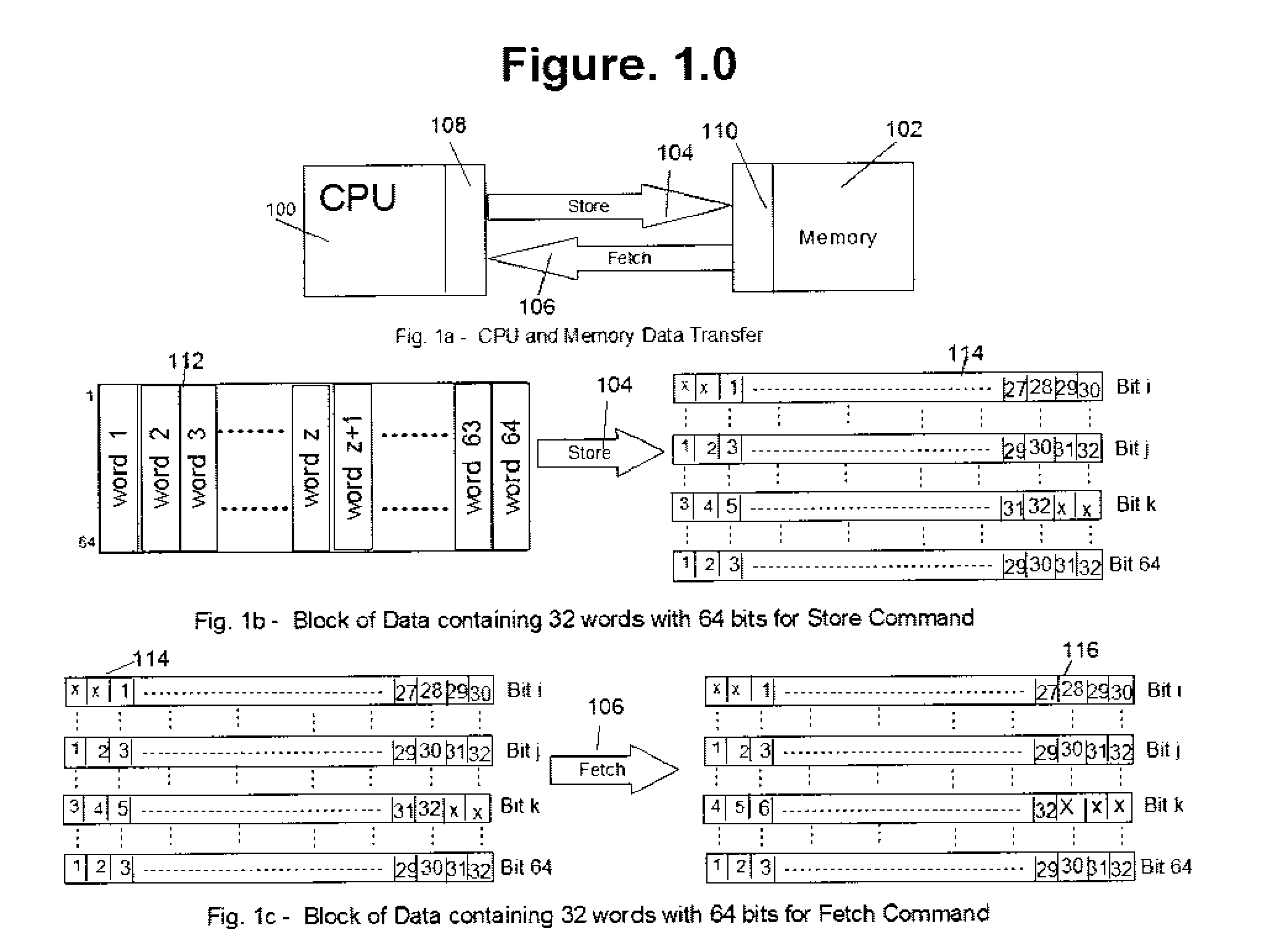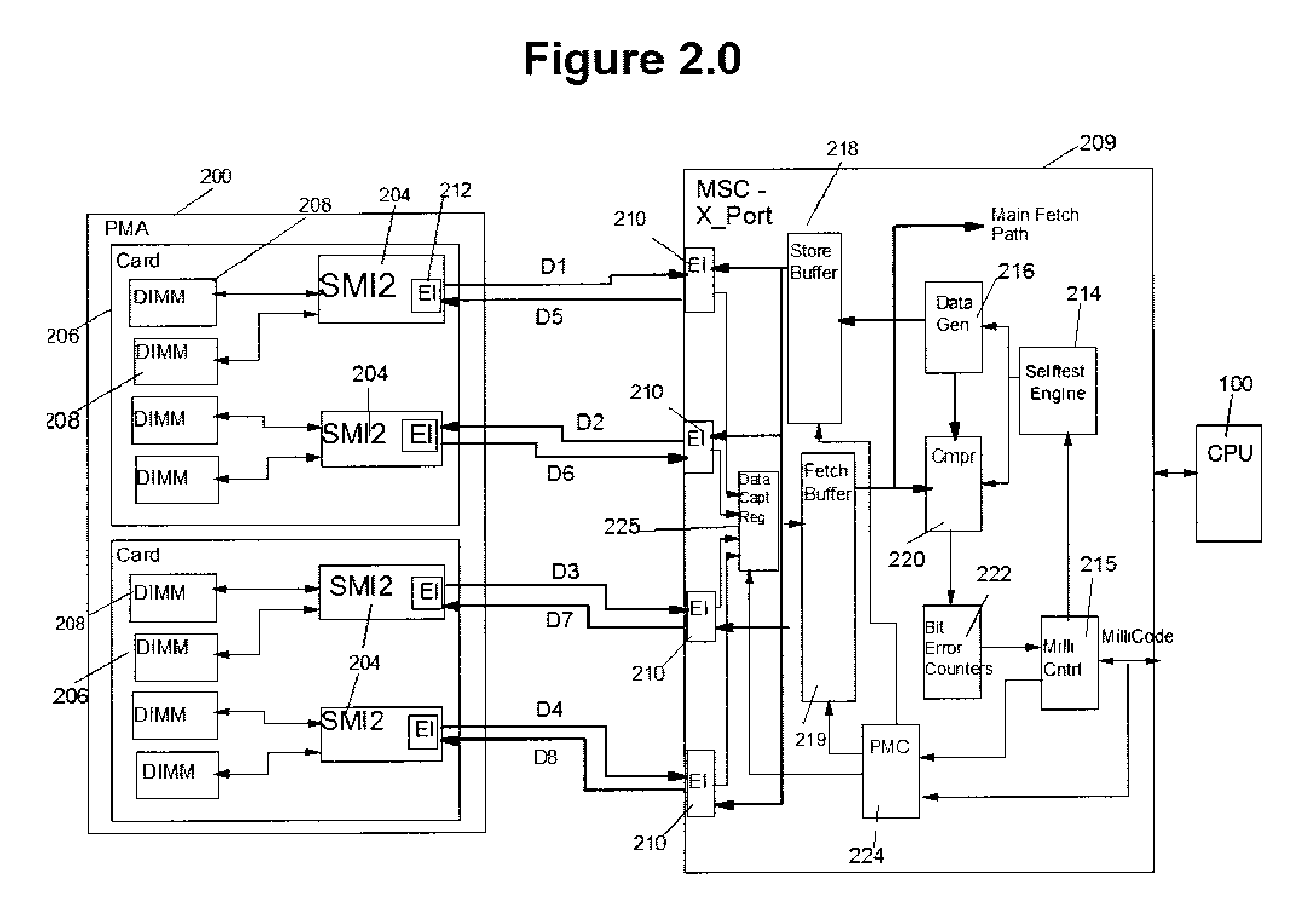Data capture window synchronizing method for generating data bit sequences and adjusting capture window on parallel data paths
a data capture window and data sequence technology, applied in the direction of digital transmission, generating/distributing signals, instruments, etc., can solve the problems of time-consuming and time-consuming methods
- Summary
- Abstract
- Description
- Claims
- Application Information
AI Technical Summary
Benefits of technology
Problems solved by technology
Method used
Image
Examples
Embodiment Construction
[0014]FIGS. 1A to 1C show transfers between a central processing unit (CPU) 100 and storage 102, performed using separate store 104 and fetch 106 paths. In a typical transfer, a block of data 112 containing 32 words of 64 bits each is transmitted from the CPU to storage and captured in the storage capture latches 110. The bits of each of each word are arranged in bytes and are transmitted in parallel. When the capture latches are properly timed to the length of latency of the parallel paths between the CPU and storage, all bits in each of the words are properly captured as indicated by bit positions i and 64 in FIG. 1B. However, the paths of the parallel bit store lines may have different lengths and have different latency characteristics resulting in data bits of a word arriving in the capture latches 110 at different times. If the capture latches have not been properly adjusted for the data line delays of a particular path, the data in different bit positions of the word will not ...
PUM
 Login to View More
Login to View More Abstract
Description
Claims
Application Information
 Login to View More
Login to View More - R&D
- Intellectual Property
- Life Sciences
- Materials
- Tech Scout
- Unparalleled Data Quality
- Higher Quality Content
- 60% Fewer Hallucinations
Browse by: Latest US Patents, China's latest patents, Technical Efficacy Thesaurus, Application Domain, Technology Topic, Popular Technical Reports.
© 2025 PatSnap. All rights reserved.Legal|Privacy policy|Modern Slavery Act Transparency Statement|Sitemap|About US| Contact US: help@patsnap.com



